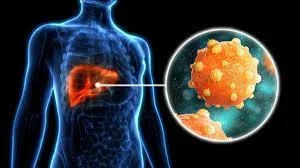Got this piece from a friend on Face Book last week and we just feel we should share with a lot more people through this medium.
Stroke Is Becoming Rampant. It Does Not Respect Age
Stroke has a new indicator! Blood Clots/Stroke – They Now Have a Fourth Indicator, the Tongue:
During a BBQ, a woman stumbled and took a little fall – she assured everyone that she was fine (they offered to call paramedics) …she said she had just tripped over a brick because of her new shoes.
Got this piece from a friend on Face Book last week and we just feel we should share with a lot more people through this medium.
Stroke Is Becoming Rampant. It Does Not Respect Age
Stroke has a new indicator! Blood Clots/Stroke – They Now Have a Fourth Indicator, the Tongue:
During a BBQ, a woman stumbled and took a little fall – she assured everyone that she was fine (they offered to call paramedics) …she said she had just tripped over a brick because of her new shoes.
They got her cleaned up and got her a new plate of food. While she appeared a bit shaken up, Jane went about enjoying herself the rest of the evening.
Jane's husband called later telling everyone that his wife had been taken to the hospital – (at 6:00 PM Jane passed away.) She had suffered a stroke at the BBQ. Had they known how to identify the signs of a stroke, perhaps Jane would be with us today. Some don't die. They end up in a helpless, hopeless condition instead.
It only takes a minute to read this.
A neurologist says that if he can get to a stroke victim within 3 hours he can totally reverse the effects of a stroke…totally. He said the trick was getting a stroke recognized, diagnosed, and then getting the patient medically cared for within 3 hours, which is tough.
Recognizing A Stroke
Thank God for the sense to remember the '3' steps, STR. Read and Learn!
Sometimes symptoms of a stroke are difficult to identify. Unfortunately, the lack of awareness spells disaster. The stroke victim may suffer severe brain damage when people nearby fail to recognize the symptoms of a stroke.
Now doctors say a bystander can recognize a stroke by asking three simple questions:
S – Ask the individual to SMILE.
T – Ask the person to TALK and SPEAK A SIMPLE SENTENCE (Coherently)
(i.e. Chicken Soup)
R – Ask him or her to RAISE BOTH ARMS.
If he or she has trouble with ANY ONE of these tasks, call emergency number immediately and describe the symptoms to the dispatcher.
New Sign of a Stroke ——– Stick out Your Tongue
NOTE: Another 'sign' of a stroke is this: Ask the person to 'stick' out his tongue. If the tongue is 'crooked', if it goes to one side or the other that is also an indication of a stroke.
Stroke Symptoms
The symptoms of a stroke depend on what part of the brain and how much of the brain tissue is affected.
• Stroke symptoms usually come on suddenly-in minutes to an hour.
• There is usually no pain associated with the symptoms.
• The symptoms may come and go, go away totally, or get worse over the course of several hours.
• If the symptoms go away completely in a short time (fewer than 24 hours), the episode is called a transient ischemic attack (TIA).
• A third of all strokes occur during sleep, so people first notice the symptoms when they wake up.
• These are the common symptoms of stroke:
o Weakness in the arm or leg or both on the same side: This can range from total paralysis to a very mild weakness. Complete numbness or a pins-and-needles feeling may be present on one side of your body or part of one side of your body.
o Weakness in the muscles of the face: Your face may droop or look lopsided. Speech may be slurred because you can't control the movement of your lips or tongue.
o Difficulty speaking: You can't speak, speech may be very slurred, or when you speak, the words sound fine but do not make sense.
o Coordination problems: You may seem uncoordinated and stumble or have difficulty walking or difficulty picking up objects.
o Dizziness: You may feel drunk or dizzy or have difficulty swallowing.
o Vision problems: You may develop difficulty with vision, such as double vision, loss of peripheral (side) vision, or blindness. (Blurred vision by itself is not usually a symptom of stroke.)
o Sudden headache: A sudden, severe headache may strike like "a bolt out of the blue." Some people have called this the worst headache of their lives.
o Loss of consciousness: You may become unconscious, stuporous, or hard to arouse and could die.
Prevention
Strokes are preventable! The most important thing you can do is to get your blood pressure checked and treated if it is high.
• Have your blood pressure checked and monitored by a doctor. Even moderately high blood pressure over years can lead to a stroke.
• Treat high cholesterol with diet and exercise and then medication to reduce the risk of stroke. High levels of blood cholesterol known as LDL (low-density lipoprotein) increase risk for stroke and may cause the formation of artery-narrowing plaque.
• In people with certain irregular heart rhythms, such as atrial fibrillation, the use of blood thinners such as warfarin (Coumadin) has been shown to reduce the risk of stroke.
• For the general population, aspirin has not been shown to reduce stroke risk. It may be useful if prescribed by a doctor for people who have an increased risk of stroke.
• Control diabetes.
• Stop smoking or never smoke.
• Know the symptoms of stroke. Act quickly when someone exhibits the signs of a stroke. Stroke is a medical emergency.
Outlook
Many people recover completely after a stroke. For others, it can take many months to recover from a stroke. Physical therapy and other retraining methods are greatly improving rehabilitation and recovery.
Despite clot-busting medications that stop a stroke in its tracks, overall, about 30% of people die from stroke. In general, the more deficits or loss of ability (in walking or talking) you have when you arrive in the emergency department, the worse the outcome.
















Discussion about this post